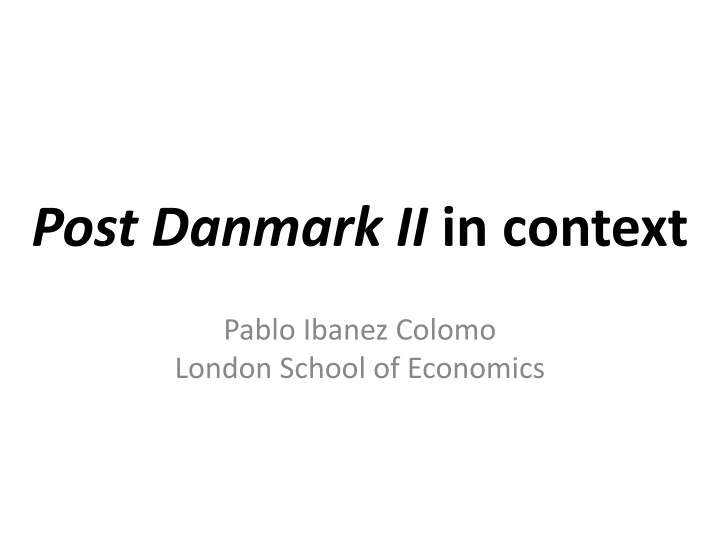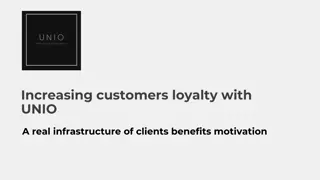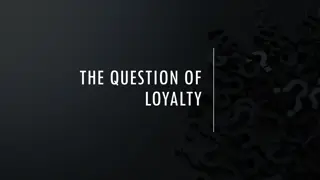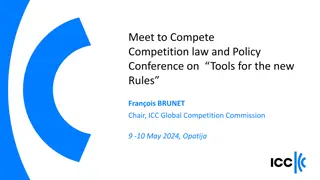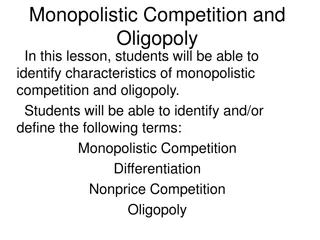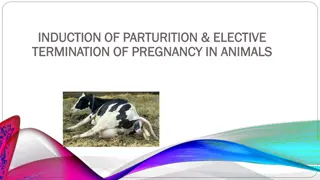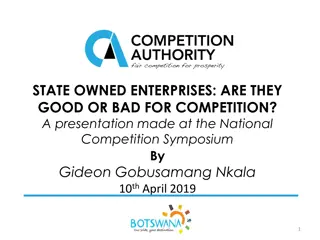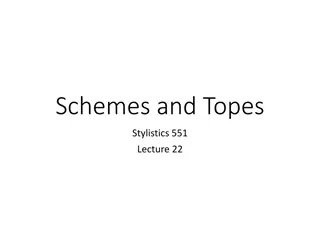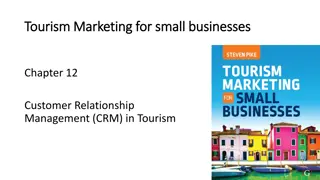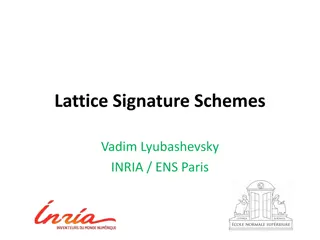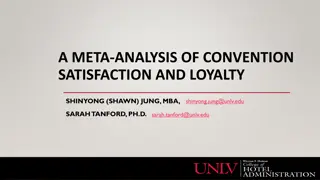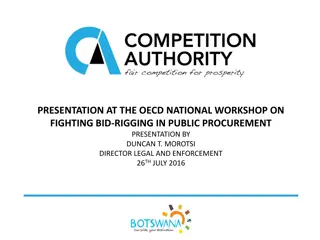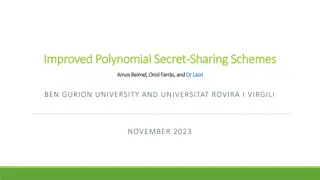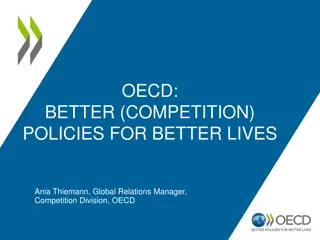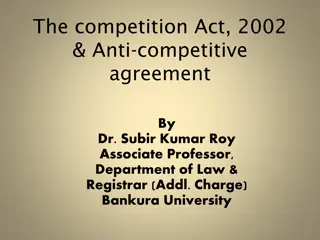Impact of Loyalty-Inducing Rebate Schemes on Competition Law
This content delves into the implications of loyalty-inducing rebate schemes on competition law, focusing on cases such as Post Danmark II and Michelin II. It discusses the shift in analyzing competitive effects, the significance of establishing exclusionary effects, and the challenges in assessing the impact on consumer welfare. Loyalty-inducing schemes are scrutinized for their potential anticompetitive nature, requiring firms to show objective justifications to avoid breaching competition regulations.
Uploaded on Sep 17, 2024 | 0 Views
Download Presentation

Please find below an Image/Link to download the presentation.
The content on the website is provided AS IS for your information and personal use only. It may not be sold, licensed, or shared on other websites without obtaining consent from the author.If you encounter any issues during the download, it is possible that the publisher has removed the file from their server.
You are allowed to download the files provided on this website for personal or commercial use, subject to the condition that they are used lawfully. All files are the property of their respective owners.
The content on the website is provided AS IS for your information and personal use only. It may not be sold, licensed, or shared on other websites without obtaining consent from the author.
E N D
Presentation Transcript
Post Danmark II in context Pablo Ibanez Colomo London School of Economics
Summary Post Danmark II and prior case law Implications for Article 102 TFEU Open questions
Post Danmark II and prior case law The analysis in Post Danmark II departs from prior case law in two majors respects Shift in the focus of analysis: from customers behaviour to effects on the competitive process Exclusionary effects are not merely assumed (capability): their likelihood is to be established
Establishing the effects of rebates Is the scheme loyalty-inducing ? Customers behaviour Impact on rivals ability and incentive to compete? Competitive process Does the exclusion of rivals harm consumers? Consumer welfare
The world of Michelin II A standardised rebate scheme was found to be abusive in Michelin II The fact that it was loyalty-inducing was sufficient to establish a prima facie breach Relevant questions in Michelin II (GC ruling) Retroactive ( all-unit ) scheme Reference period of one year Significant variation in the discount rates
The world of Michelin II 95. It follows from all of the foregoing that a quantity rebate system in which there is a significant variation in the discount rates between the lower and higher steps, which has a reference period of one year and in which the discount is fixed on the basis of total turnover achieved during the reference period, has the characteristics of a loyalty-inducing discount system . Case T-203/01, Michelin II
The world of Michelin II In the world of Michelin II, the exclusionary effects of the scheme need not be shown Loyalty-inducing schemes are deemed to have an anticompetitive object (para 241) Such practices are assumedto be capable of having exclusionary effects The absence of exclusionary effects is not a valid defence The firm can only escape the prohibition by advancing an objective justification
The world of Michelin II Is the scheme loyalty-inducing? Customers behaviour Impact on rivals ability and incentive to compete? Competitive process Does the exclusion of rivals harm consumers? Consumer welfare
The world of Post Danmark II The Court proposes a two-step test in Post Danmark II (paras 29-30) 1. Assess the nature and the operation of the scheme (paras 31-38) 2. Examine the likely exclusionary effects of the scheme (paras 39-46) Showing that the scheme is loyalty-inducing is not sufficient to establish an abuse The exclusionary effects are not merely assumed; likelihood must be established
The world of Post Danmark II The likely exclusionary effects of the scheme are established in light of: Extent of the dominant position (para 39) Is the dominant firm an unavoidable trading partner? (paras 35 and 40) Regulatory barriers to entry (para 40) Coverage of the practice (para 46) An objective justification may be advanced once exclusionary effects are established
The world of Post Danmark II 46. However, the fact that a rebate scheme, such as that at issue in the main proceedings, covers the majority of customers on the market may constitute a useful indication as to the extent of that practice and its impact on the market, which may bear out the likelihood of an anti-competitive exclusionary effect . Case C-23/14, Post Danmark II
The world of Post Danmark II Is the scheme loyalty-inducing? Customers behaviour Impact on rivals ability and incentive to compete? Competitive process Does the exclusion of rivals harm consumers? Consumer welfare
Summary Post Danmark II and prior case law Implications for Article 102 TFEU Open questions
Implications for Article 102 TFEU Post Danmark II confirms that the object/effect divide exists in Article 102 TFEU Some practices are deemed abusive by their very nature ( by object ) Evidence of exclusionary effects is not required The practice is assumedto be capable of having such effects Other practices are only abusive where they are likely to have exclusionary effects
Implications for Article 102 TFEU By object abuses Byeffect abuses Pricing below AVC Refusal to deal Exclusive dealing Margin squeeze Loyalty rebates Standardised rebates Tying Selective price cuts
Implications for Article 102 TFEU Post Danmark II provides insights about the assessment of by effect practices The approach seems very much in line with the logic of the Commission Guidance Threshold of effects: likelihood of foreclosure Criteria to assess the exclusionary effects of the practice except for the perpetuation of the by object category for some practices (para 27)
Summary Post Danmark II and prior case law Implications for Article 102 TFEU Open questions
Open questions Is there a reason not to extend Post Danmark II to target rebate schemes? Schemes based on individualised targets may be more conducive to foreclosure But: Would it be enough to claim that the scheme is loyalty- inducing , as in British Airways? After Post Danmark II, exclusionary effects are not to be assumed, they have to be established (2-step test)
Open questions Is it justified to prohibit exclusivity and loyalty rebates by object after Post Danmark II? There are, in theory, two reasons why this would be justified Argument 1: it is safe to presume that exclusivity and loyalty rebates serve an exclusionary purpose Argument 2: Exclusivity and loyalty rebates can have exclusionary effects
Open questions Is it safe to presume that exclusivity and loyalty rebates serve an exclusionary purpose? These practices are plausibly pro-competitive (unlike cartels) This point is not disputed. See: Case law (e.g. Delimitis, BPB, Van den Bergh Foods, Intel) Commission Guidance on Article 102 TFEU (paras 34 and 37) Commission Guidelines on vertical restraints (paras 107 and 146) After Post Danmark II: is it enough to claim that these practices are potentially exclusionary?
